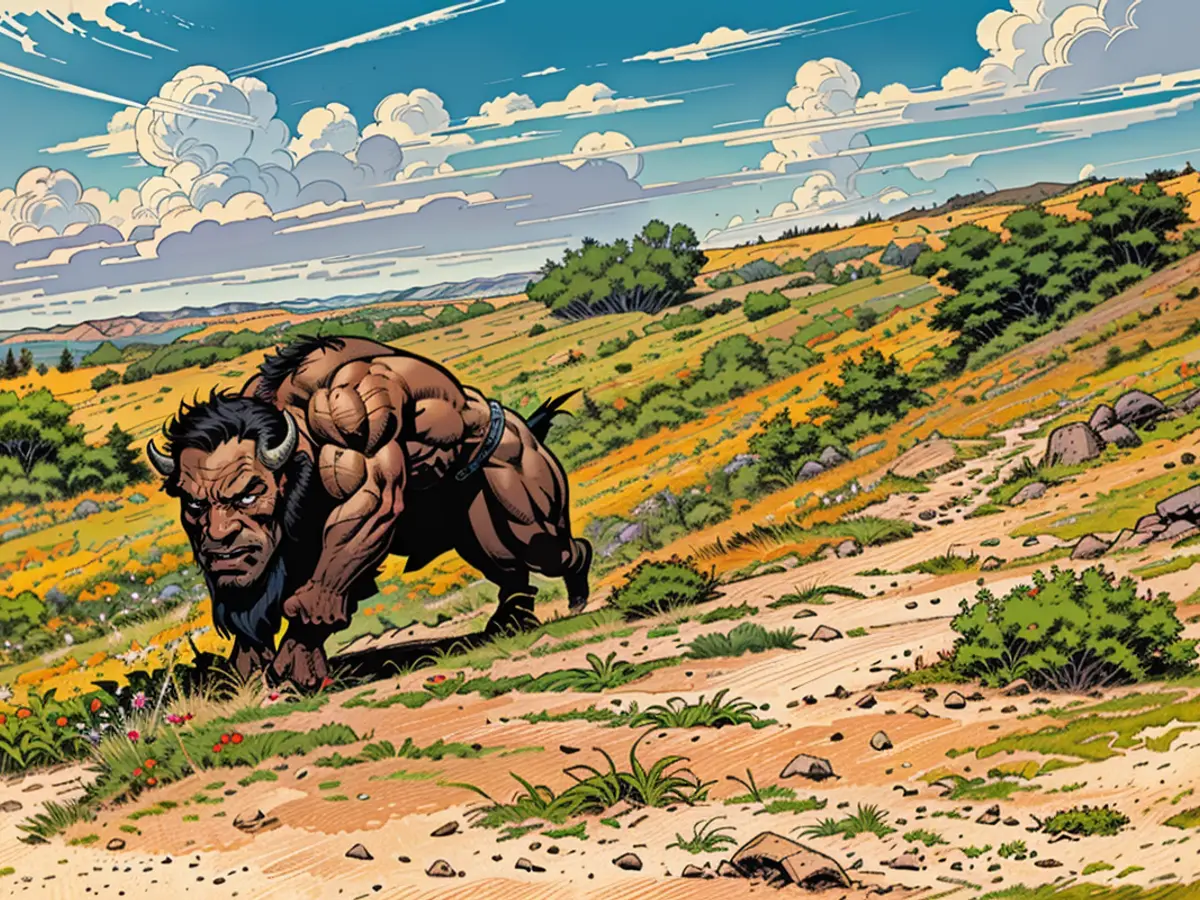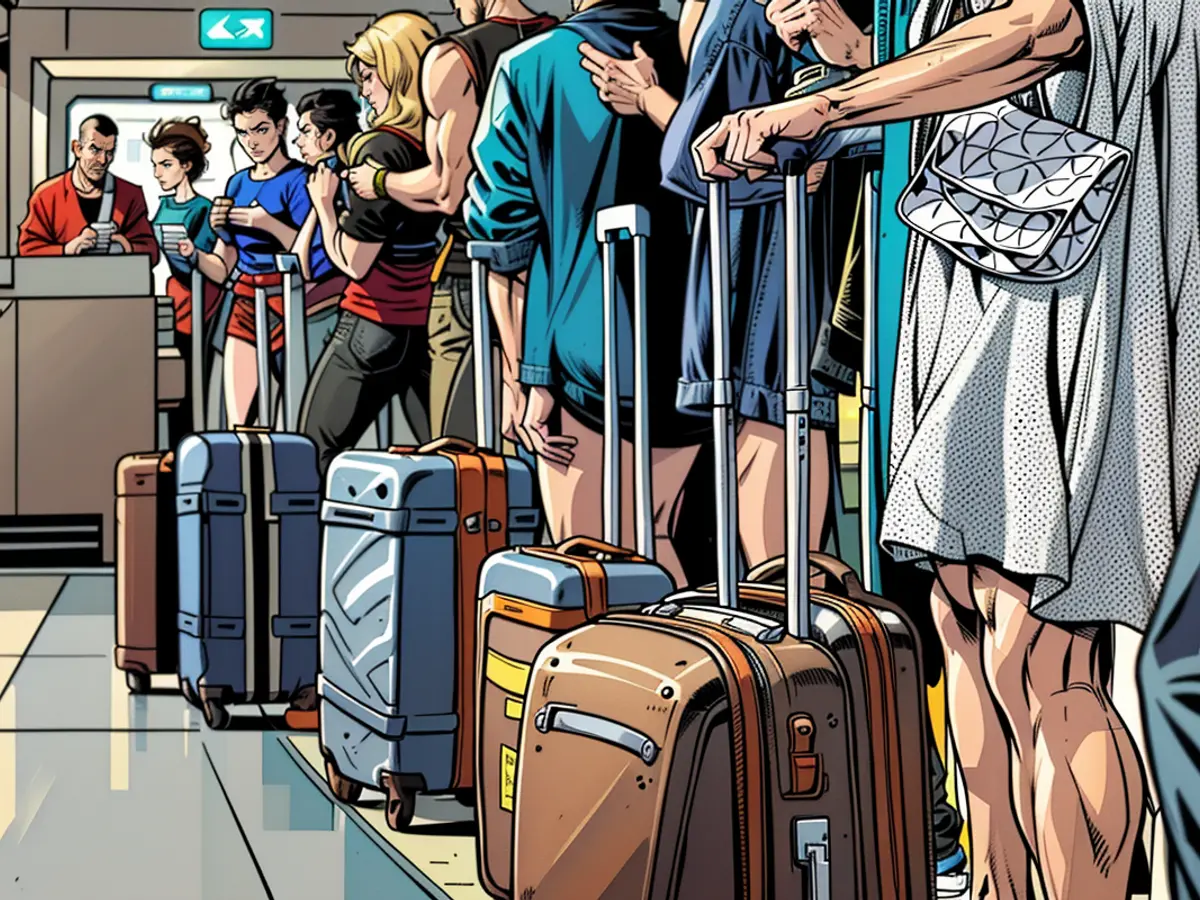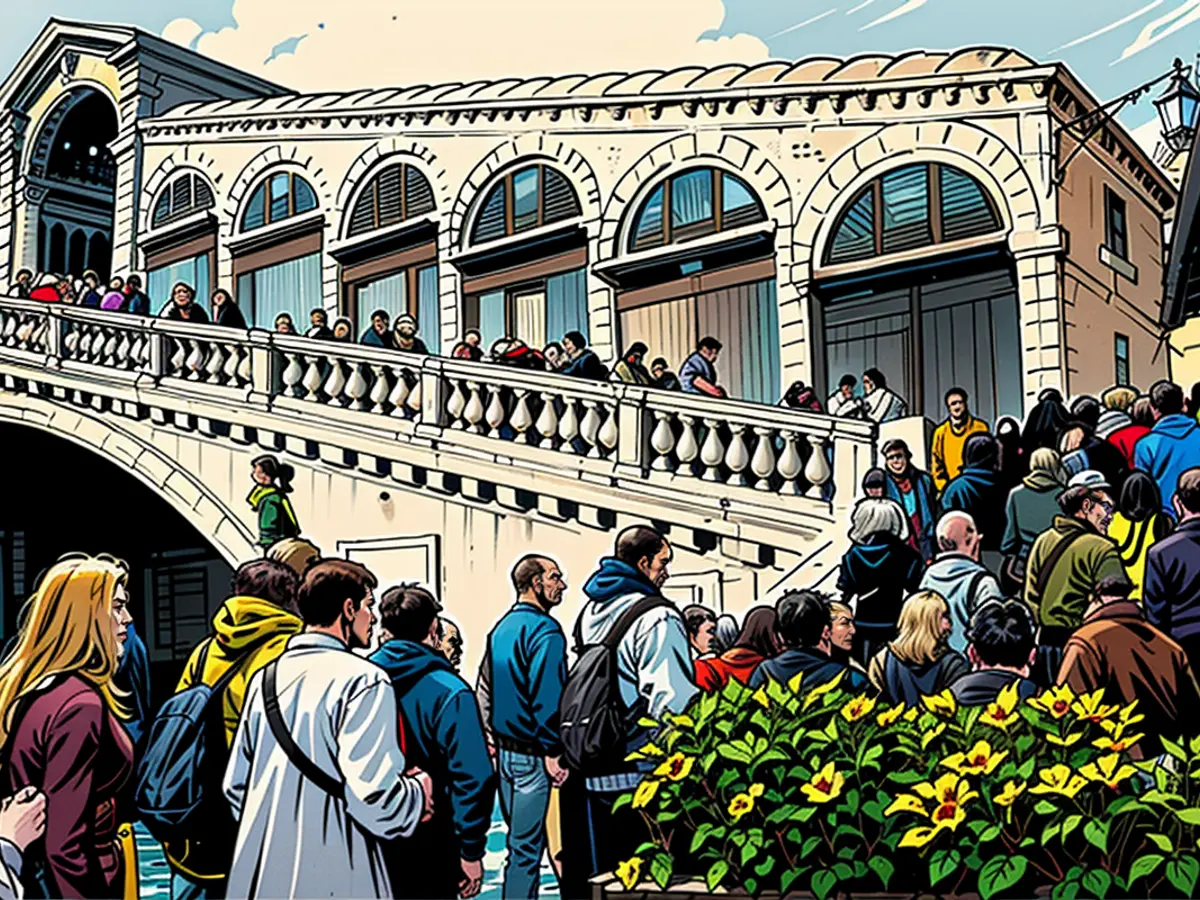Encountering a bison in its natural habitat gazes at you. Are you aware of the subsequent steps to take?
She had a strong fondness for Texas' third-largest state park after her first solo hiking and camping trip there a year prior. Situated approximately two hours by car from Lubbock or Amarillo, Caprock draws in visitors thanks to its stunning blue skies, prairielands, and distinctive red-rock formations.
Caprock also boasts an intriguing attraction - its large herd of wild bison, numbering around 350 in late 2022. Although these magnificent creatures of the Great Plains were initially off her radar, that soon changed.
She shared her encounter with CNN's Ed Lavandera, recounting how she crossed paths with the bison herd while returning from Lake Theo.
“I chose to wait for them to move across the trail, then I'd continue past them,” she explained. But the animals weren't retreating swiftly enough for her, leading her to get closer than the recommended safety distance. She documented the moment on her phone.
In the recording, she could be heard saying "Thank you, I appreciate it" as she passed the bison.
Matters quickly turned dangerous when one of the agitated bison took notice. "As soon as I saw him turn, I knew he was coming after me," she said.
True to form, the bison charged, closing the gap between them within two seconds. Despite her desperate efforts to escape, she described the incident as being "unbelievably fast."
“He hit me in the back, rammed me, hooked me, then flipped me up onto my face into the mesquite bush.” She found herself, injured and alone. The question was: could she endure?
‘People can get hurt’
If provoked, it's not hard to understand why these formidable creatures, with adult males weighing from 2,000 to 2,200 pounds (907 to 998 kilograms) and adult females at around 1,000 pounds (454 kilograms), can pose significant threats to unarmed individuals such as herself. Add their sharp horns and surprising speed (at least 30 mph or 50 kmh), and you have an unforgiving opponent.
Contact with European settlers brought about a catastrophic decline for bison, nearly leading to their extinction in the late 1800s. Conservationists stepped in to ensure the species' survival. Today, they can be found in various parts of 12 US states. Yellowstone National Park is the sole location where these animals have grazed continuously since prehistoric times.
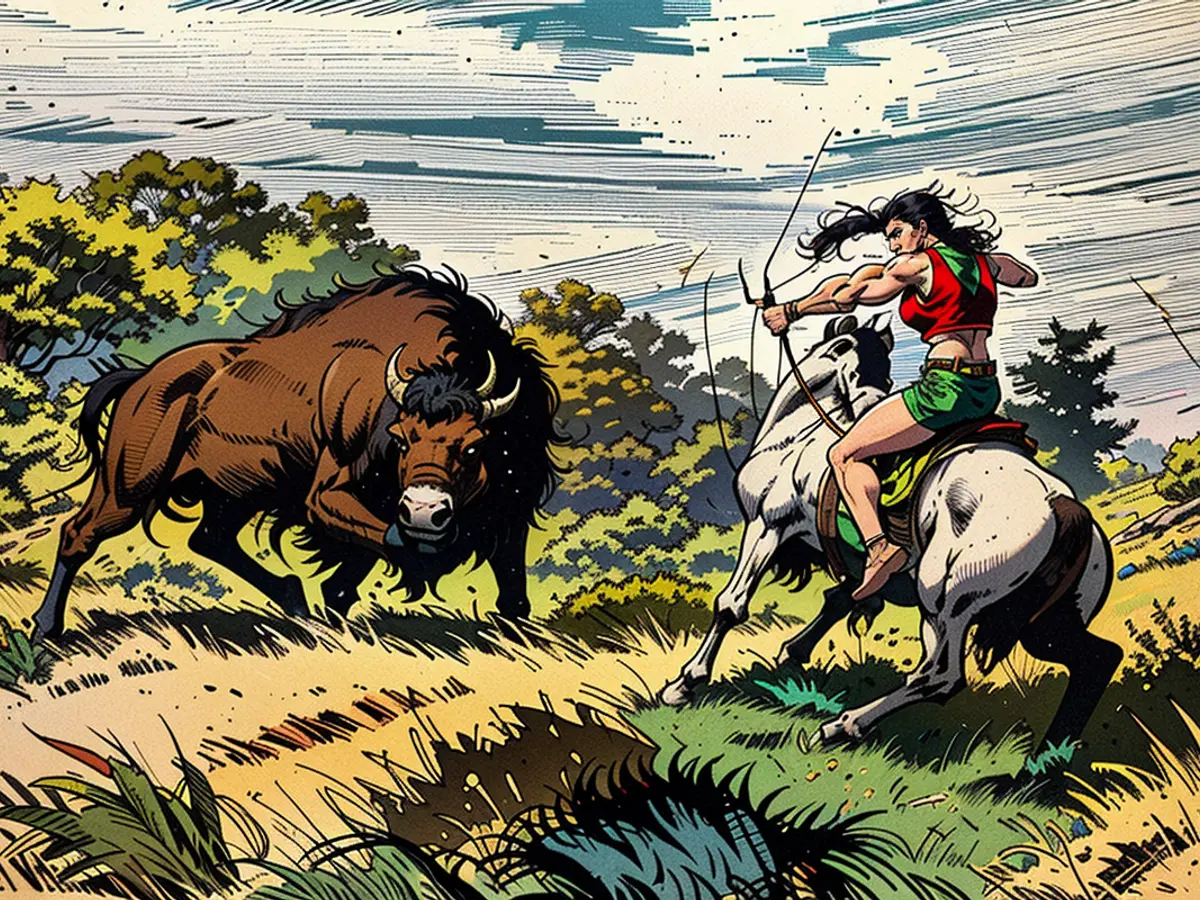
As wilderness areas grow increasingly popular, managing human-wildlife interactions becomes complex. That's where experts like Chris Geremia, senior bison biologist at Yellowstone, come in.
“When you first glimpse a grizzly bear, a wolf, or a bison in this park, it’s an experience you'll never forget,” Geremia told CNN's Lavandera. "But it also means people can get hurt. It's essential to communicate to visitors that they must maintain a distance and respect the animals' space.”
Yet, how can such tranquil herds, seemingly content with peaceful grazing, coexist with those simply hoping to observe them?
“If pushed, bison can become extremely aggressive, defending themselves,” Geremia explained.
How to avoid a bison attack
Maintaining a safe distance is the best strategy to avoid confrontations with these creatures. However, expert guidance varies.
The National Park Service advises keeping a distance of 100 feet (30 meters or two bus lengths) from bison. The Catalina Conservancy recommends maintaining a distance of 125 feet (40 yards or 38 meters), while Parks Canada suggests staying at least 100 meters (about 330 feet) away.
Be sure to obtain local guidance prior to venturing into parks, and consider bringing a camera equipped with a telephoto lens to capture photos from a distance of at least 25 yards away. Avoiding getting too close should help curb the temptation to edge closer.
Warning signs of agitation
Even without specialized knowledge, you can often sense that something is amiss.
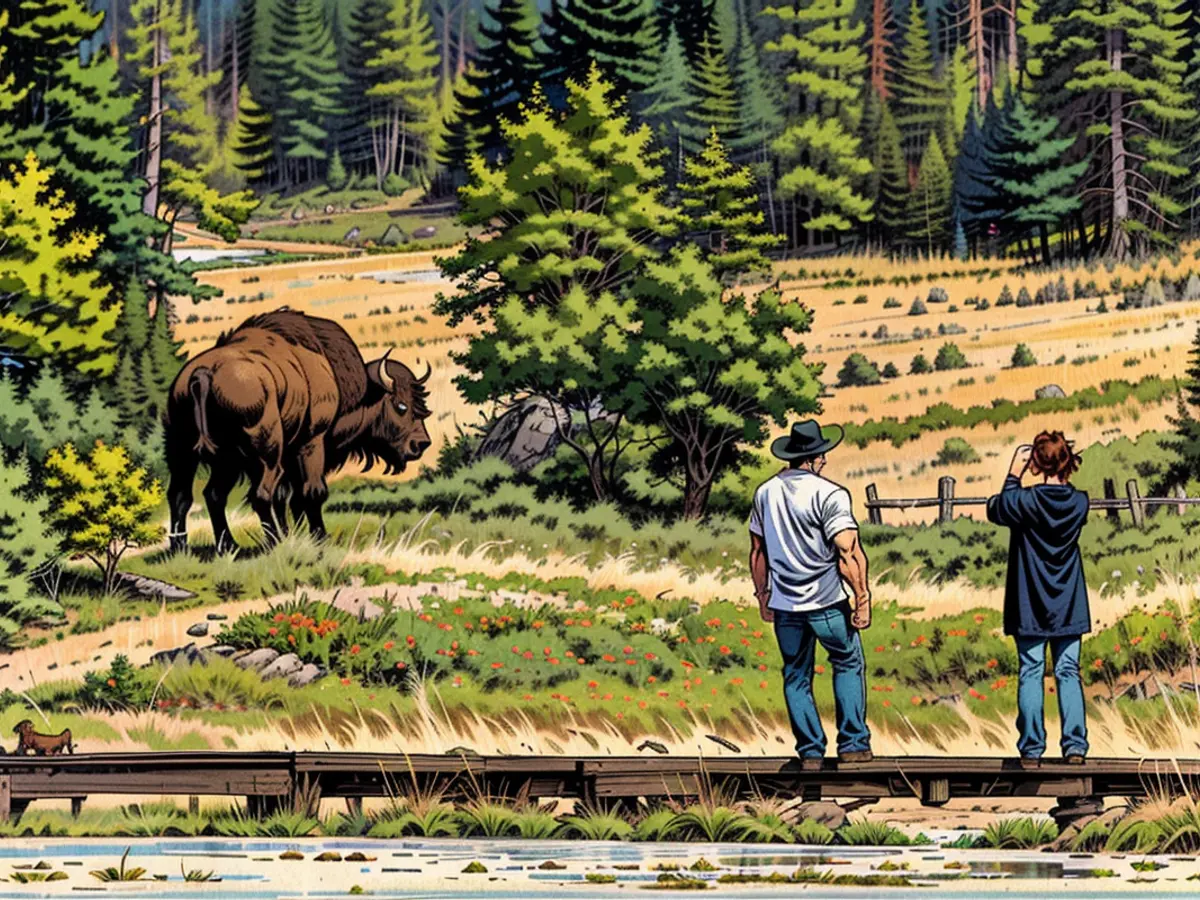
“The animals will let you know when you're too close,” Geremia said. “They will raise their tail straight up, bob or shake their head, paw the ground, and that means you are unequivocally too close.” Just being noticed is enough to set you on high alert, according to the Utah Division of Wildlife Resources. “If you encounter a bison and it stops what it is doing to pay attention to you, you're too close and should gradually retreat.”
Other signs of potential trouble from bison:
• It keeps staring at you.• It sways its head from side-to-side and bellows or huffs.• It turns its back to you, raises its tail, and defecates.• It performs a "bluff charge," where the animal initiates a run but stops short before making contact.
If you encounter these indicators, this is what you ought to do:
"It's best to step back. So, I'd literally just turn around and leave," Geremia suggested. "The quicker you depart, the better. That's basically what the animal is asking of you."
Particular moments to maintain a high level of vigilance:
• May and June (as cows are incredibly protective of their calves).• July and August (it's mating season, known as "the rut," when bulls become aggressive).• When cycling (you can accidentally approach herds too swiftly and silently).• If you're with dogs (keep them on a leash).
Catalina Conservancy recommends making noise while hiking to avoid startling bison and not to wear earbuds to also hear potential wildlife nearby.
If you're hiking, Catalina Conservancy advises not to be excessively committed to the trail, according to the Utah DWR.
"If you're hiking and a bison is near or on the trail, you should either step back and return the way you came, or leave the trail and give the animal a significant distance when passing it," the Utah DWR suggests.
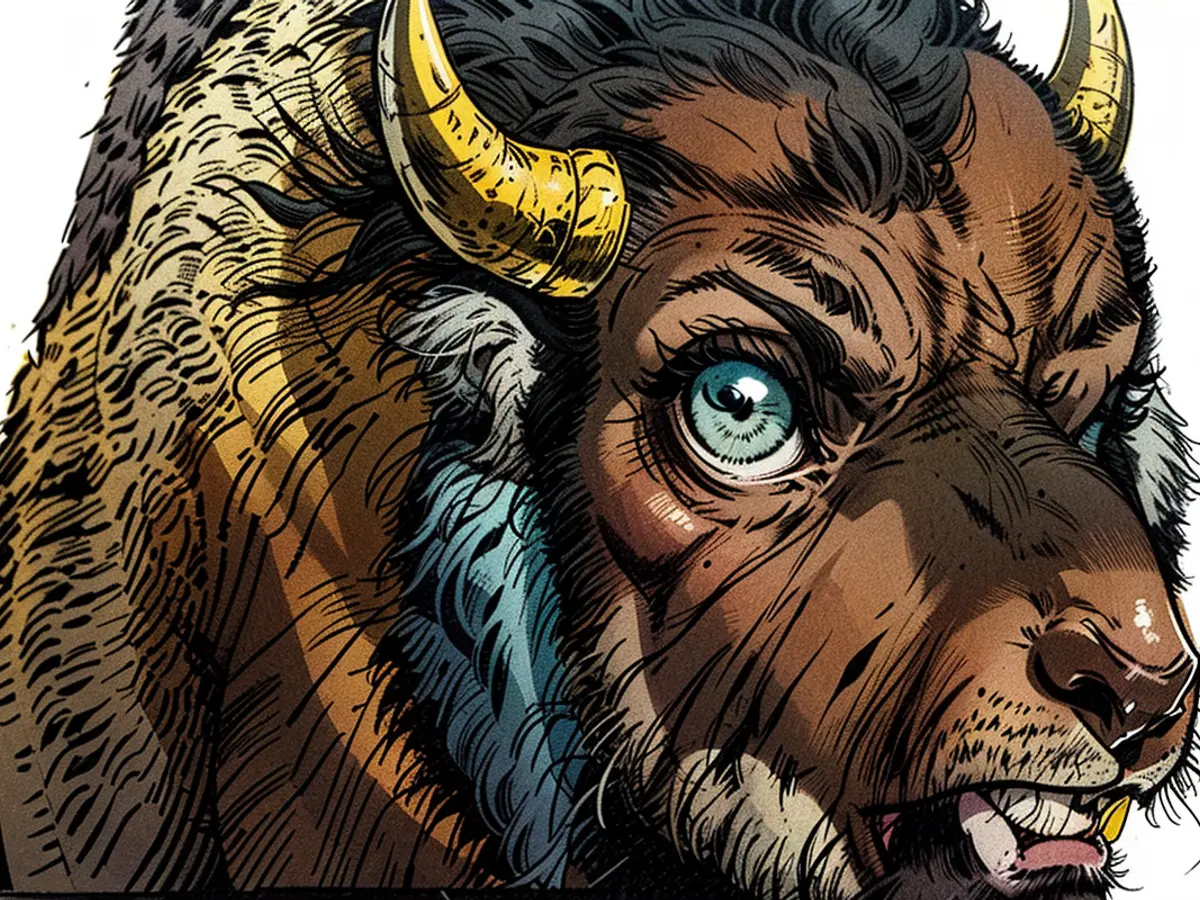
The worst-case scenario is getting charged, just like Rebecca Clark in Texas. If that happens, Catalina Conservancy suggests:
• Act assertively, shout loudly and wave your arms.• If possible, toss something that might disrupt the bison's focus.• If you can't avoid a collision, lower yourself to the ground as much as possible and safeguard your head and torso.• Acting dead may halt an attack.
However, if you have a 2,000-pound animal with horns charging towards you at 30 mph, "You're bound to sustain heavy injuries," Geremia warned.
‘I believed I was incapacitated’
Rebecca Clark was fully aware she was harmed.
"I knew he had hit me. I didn't know he had gored me. ... Honestly, I thought I was paralyzed. It numbed me that much," she said. "I rolled myself over and understood I needed aid. That was my first instinct."
Luckily for Clark, she was conscious and able to move. She started sending messages for help to her son and two friends. At one point, she thought she felt her water bottle leaking. But it was blood she felt from being gored.
The bison herd remained in Clark's vicinity, she said, until a park ranger arrived to assist about 40 minutes later, she estimated. About 10 minutes after that, medical emergency personnel arrived.
She was hospitalized for six days and received comprehensive wound care to prevent infection from the three-inch wound on her back, Clark said. She decided to share her video on social media so others could learn from her experience.
"You know, I wasn't as proactive as I should have been about knowing about bison before I went hiking."

But she doesn't want anyone to avoid wild outdoor activities due to what happened to her.
"I'm trying to preserve the opportunity to explore nature."
After her harrowing encounter with a bison, Rebecca Clark reflected on the importance of understanding the behaviors and safety protocols for wildlife, especially animals like bison that are attracted to popular wilderness areas.
Traveling to Caprock Canyons State Park, a place known for its stunning natural landscapes and the large herd of wild bison, should include thorough research and preparation.
Read also:
- Fear of escalation in the Middle East: US Secretary of State Blinken travels to the region again
- Government circles: US Secretary of State Blinken to travel to Middle East again
- Bridging days 2024: How you can double your vacation this year
- Germany has wanderlust: how tour operators and airlines are looking ahead to the next travel year
